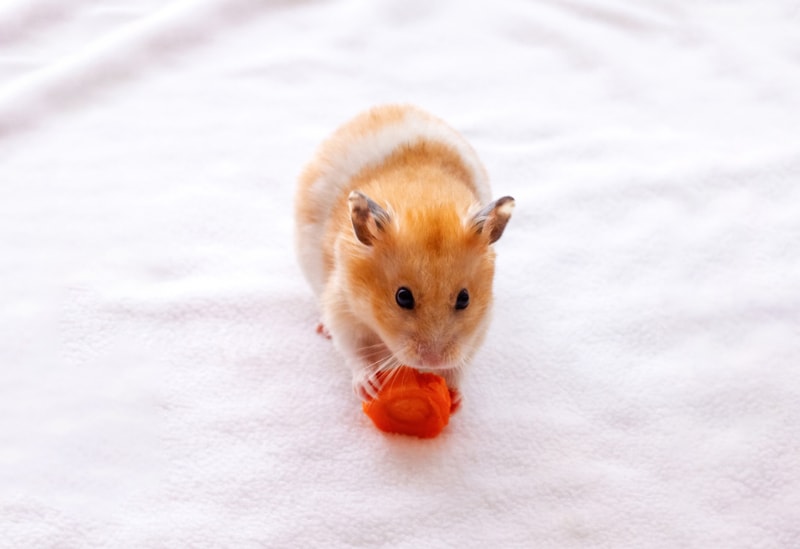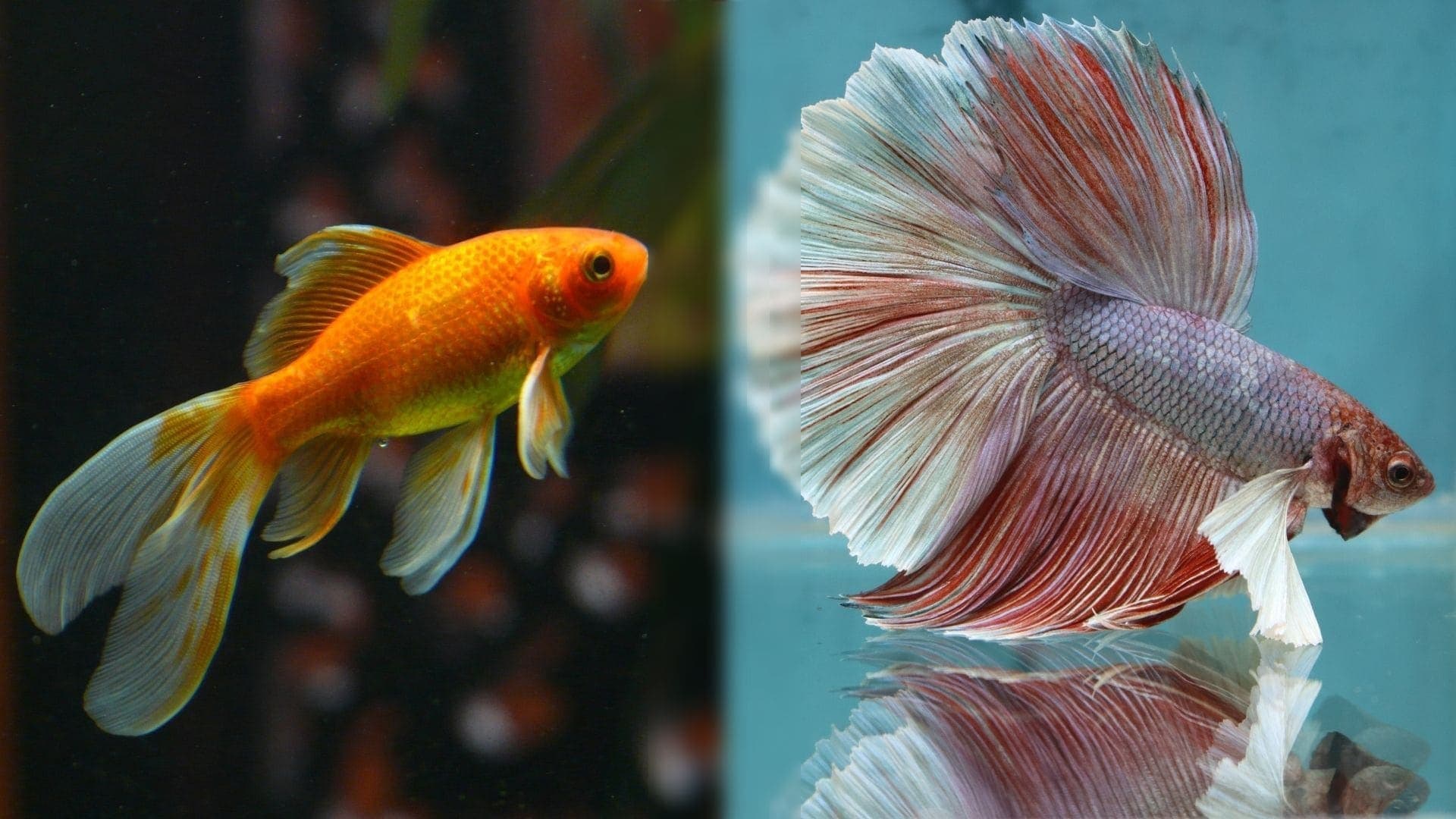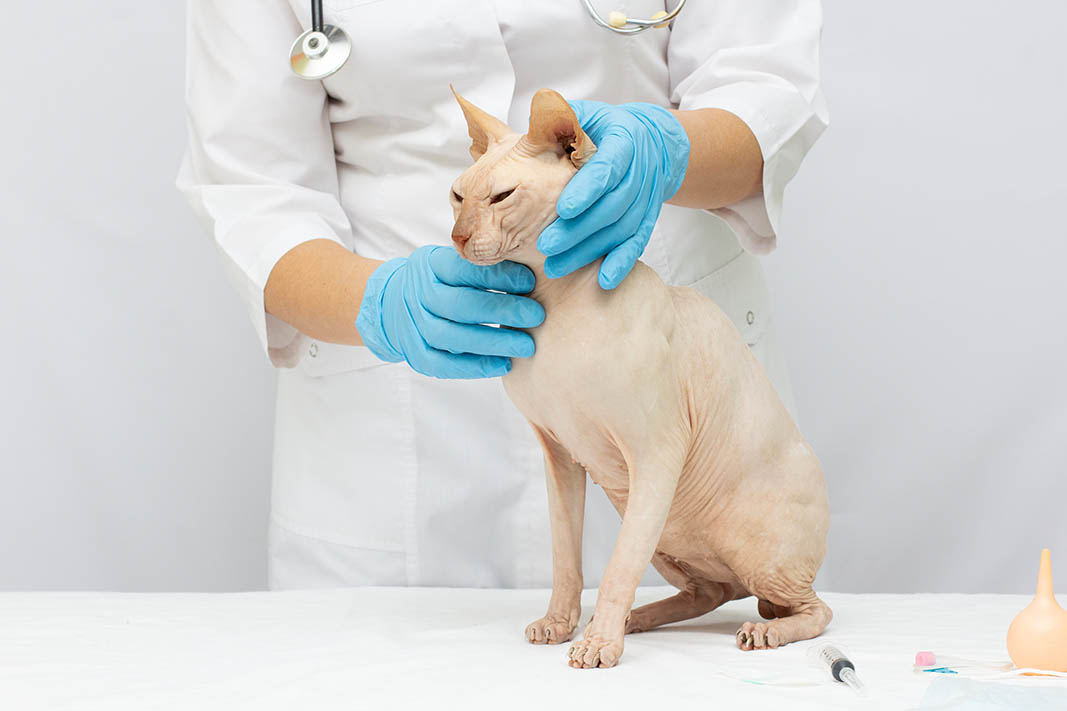Roborovski Dwarf Hamster: Pictures, Temperament, Diet, Care Guide & More Vet-Verified Info
By Ashley Bates
Updated on
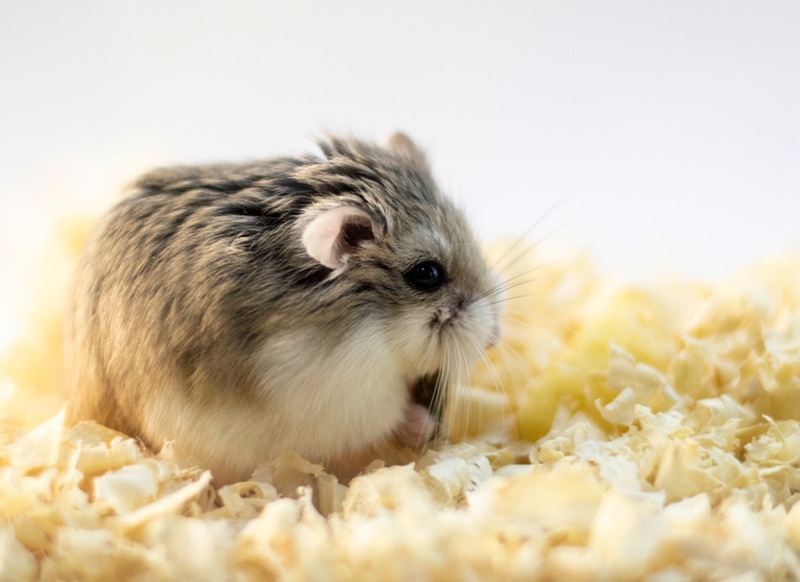
Click to Skip Ahead
If you walk into a pet store, the Roborovski dwarf hamster (Phodopus roborovskii) will undoubtedly catch your eye. They are cuddly-looking, wide-eyed balls of fluff that love their nap time. If this is your first time owning a hamster, you might wonder about the different varieties and whether or not one of these hamsters would be right for you.
If the Roborovski dwarf hamster caught your attention, you did the right thing by learning more about this exciting hamster variation. In this article, we will go over everything that makes this little guy such a unique pet selection so you can make an informed choice about whether you should own one.
Breed Overview
| Size: | 2 inches (5 centimeters) as an adult |
| Weight: | 0.71–0.88 ounces (20–25 grams) |
| Lifespan: | 2–3 years (average), 4.8 years record 1 |
| Similar To | Other dwarf hamsters |
| Suitable for: | First-time owners, folks wanting a hands-off pet |
| Temperament: | Solitary, agreeable, active |
The Roborovski dwarf hamster is the smallest member of the dwarf hamster genus of Phodopus. The species goes by many names, including the desert hamster and the robo dwarf hamster.
These little guys are relatively hands-off and make ideal pets for someone who wants to interact with their pet without much handling. In this article, we will discuss this particular species and details on what it’s like to own one. Will this tiny rodent make a good fit for your lifestyle?
Roborovski Dwarf Hamster Characteristics
How Much Do These Roborovski Dwarf Hamsters Cost?
To purchase a robo hamster, it’s relatively inexpensive for the hamster itself. Depending on where you buy, you can expect to spend between $10 and $30. You can find robo hamsters at pet shops or from a select private breeder.
Some folks even get these hamsters not knowing how quickly they breed and have accidental litters consequently. These people might just be trying to find a home for the offspring without making too much of a profit. In that case, you can find them for cheaper than $10, and maybe even free!
In addition, some people get tired of owning a hamster or can’t give them the time or attention they deserve. If they choose to rehome, they might just give away the hamster, cage, and supplies for next to nothing.
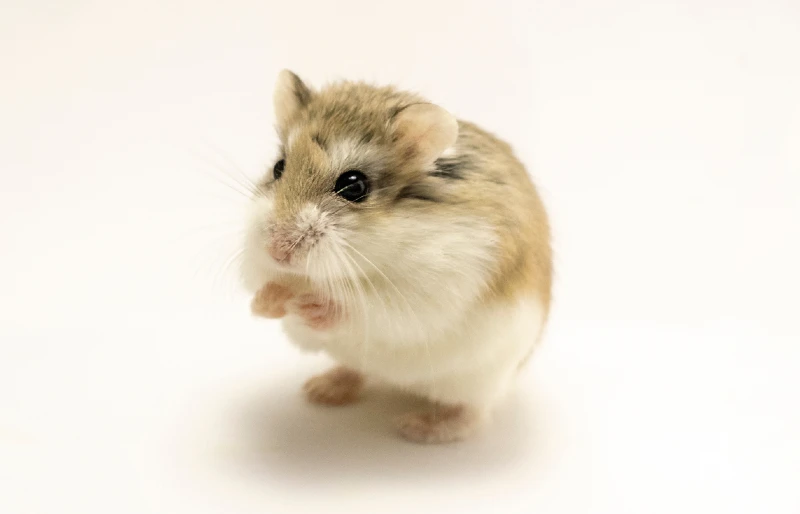
Temperament & Intelligence of the Roborovski Dwarf Hamster
These hamsters have a pretty good temperament, permitting they’re handled correctly. Any hamster that is bothered has the potential to bite. So, if you notice your little guy being extra moody one day, it’s best to let them have their space until they’re in better spirits.
That’s not to say that they always give you a warning. If you rustle your hamster up from a nap, they might nip unexpectedly from being startled. It is crucial to understand the bite risk associated with hamsters and handle accordingly.
You’ll soon learn the body language of your hamster and know when a good time is to pet or hold these little guys—and when to leave them alone. Sadly, though, these hamsters are not recommended if you’re really looking for a cuddly pet that sits in your hand. They are exceptionally active, and in the wild, they can dig tunnels up to 6 feet deep and travel up to 6 miles (almost 10 kilometers) every night! Nonetheless, they are equally fun to watch run around without so much physical contact, so remember that contact isn’t the only way to spend time together.
You can get your hamster out of their enclosure and let them explore controlled space, or you can offer them various entertainment around the cage and observe them as they play.
These hamsters, like all other hamsters, are hoarders by nature. They will collect food and stash it away in their cage. Also, each one of their cheeks acts as a pouch and can hold food to their shoulders—talk about impressive!
Do These Hamsters Make Good Pets?👪
Robo hamsters are popular for a reason! These hamsters can make phenomenal pets for the right families. You can enjoy watching them traipse around their enclosure, digging tunnels, and running marathons on the wheel.
Robo hamsters are popular for a reason! These hamsters can make phenomenal pets for the right families. If you’re a single owner, these little guys will bond with you, and you can enjoy watching them traipse around their enclosure, digging tunnels and running marathons on the wheel.
They often make excellent first-time pets because they don’t require a lot of interaction. Granted, they still require routine bedding changes and feeding times. So it is best that smaller children understand proper handling practices.
Hamsters are not as social as, say, rats or guinea pigs, and will not enjoy being held as often. A child must understand boundaries, care, and body language. As a parent, this is not the type of pet you can get and not supervise during playtime and interactions.
These hamsters can quickly get lost, injured, or even killed with the wrong handling. However, if they are properly cared for, these little guys are the ideal companions for kids aged 6 and older.
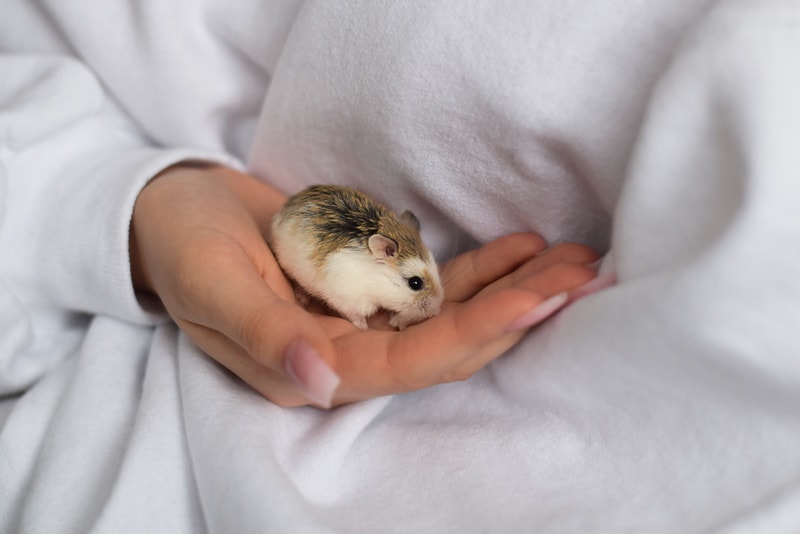
Does This Hamster Get Along With Other Pets?
You can typically house same-sex hamsters together provided they are introduced at a young age (and ideally if they’re littermates), but these animals usually prefer to be alone. Unlike other rodents that are highly social and operate best when with their own species, hamsters are quite nomadic and solitary.
So, this would make an excellent pet if you only wanted to own one small animal without the extra commitment. As far as other species go, hamsters are incompatible with everything and will not make friends with your existing pets.
They are tiny cage animals that do not get along with other rodents, nor should they ever be around a cat or dog (especially unattended). Even if you don’t think your cat or dog has a high enough prey drive to hurt a hamster, even those with the best of intentions can do so accidentally because of the size difference alone.
So, if you get one of these hamsters, they will enjoy life best alone. Make sure that you never buy a male and female together. These animals breed extremely fast; before you know it, you will be overwhelmed with multiple litters.
While having baby hamsters can be cute, it can be incredibly challenging to find homes and care for them in the process. The best way to prevent the problem is to ensure you have the right sexes before placing two hamsters in a cage together.
Things to Know When Owning a Roborovski Dwarf Hamster
Food & Diet Requirements
Robo hamsters are both cherry pickers and food stashers. If you give them a lot of food at a time, you might think they’re eating all of it since you don’t visibly see it in the cage, but that is often not the case.
These hamsters will take any excess goodies they can find and stash them away under bedding and hideaways. While this is often an expected behavior, it can be especially problematic with fresh foods.
If your hamster stashes away vegetables or fruits, they can become rancid in the cage, leading to decay, causing bad smells and unsanitary living conditions. It is imperative to spot-clean a hamster’s enclosure to ensure it is free of any unnecessary debris.
Also, if you get mixed bags of food, your hamster can sift through it and get all of the sweet snacks and other goodies. If they fill up on these foods, they might miss vital nutrients. It’s often best to get a pellet-based formula with all ingredients mixed together so they can’t pick and choose. Hamsters should be offered hay and fresh, clean drinking water at all times.
Habitat & Hutch/Enclosure Requirements
Robo hamsters are incredibly small, so you might think that they only need a little space. While it’s true that they don’t require as big of cages as some other pets, they do need an adequate setup to ensure they can naturally burrow as they would in the wild.
For a dwarf hamster, they require an enclosure that is at least 12 by 24 inches—but the bigger, the better. Keep in mind that these are burrowing animals. Many hamster owners purchase cages with deep bases and fill it with substrate to do what is natural.
Some even create their own DIY cages with natural substrates so their hamster can live as similarly to the wild as possible. If you’re feeling creative, check out some ideas on sites like YouTube or Pinterest.
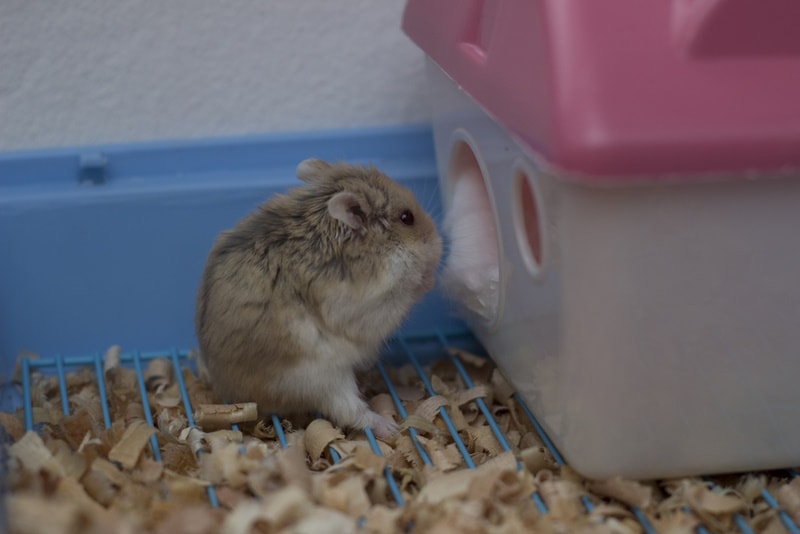
Exercise & Sleeping Needs
Hamsters need a source of entertainment, and exercise wheels are a must! This allows your hamster to run off all of their pent-up steam without ever leaving their cage. They also need a hide in which to retreat to and sleep.
Hamsters are nocturnal creatures that are most active at night. This can be challenging if you have noisy equipment like exercise wheels and rackety tunnels where you sleep.
If you are a light sleeper, we highly suggest keeping the cage outside of your room so you can get some sleep and they can do their thing—both of you remaining uninterrupted.
We have to say that floor time is still important. However, you shouldn’t use a hamster ball. Hamster balls are problematic because they don’t allow a hamster to control when it stops if it starts moving. The hamster can easily become injured as the ball rolls around and bumps into furniture or objects. The spherical nature of the ball can also result in a disoriented pet.
Training
While training a hamster isn’t entirely customary, that doesn’t mean they can’t learn new things. Hamsters are relatively intelligent small rodents that can learn quickly. You can teach them to use a litter box as well as mazes and puzzles, and even to do tricks for treats.
These highly motivated animals absolutely love snacks, so you can bribe them to do just about whatever you want in exchange for a delicious piece of fruit or favorite grains. However, keep in mind that this can lead to weight gain!
Grooming
Hamsters are pretty good at grooming themselves. However, it’s also important to keep their fur dry and debris-free. Most hamsters enjoy taking sand baths. Commercial sand is available for this purpose. The sand you use for your pet should be dust-free.
Allowing your hamster to have feces caked on their fur or urine stains on their backside can lead to health issues. Not only can they get a condition called wet tail, but they can also develop urinary and reproductive problems. However, hamsters shouldn’t be given a bath with water unless absolutely necessary, as their small body surface area means they can quickly succumb to the cold. Furthermore, cakey feces or urine stains are not normal in healthy hamsters and, therefore, if you see these, you should schedule a vet visit for your hamsters promptly.
Keep in mind that issues such as wet tail can quickly lead to dehydration and other illnesses in hamsters, so you shouldn’t take it lightly; a soiled backside should be prioritized to be seen by a veterinarian rather than washed.
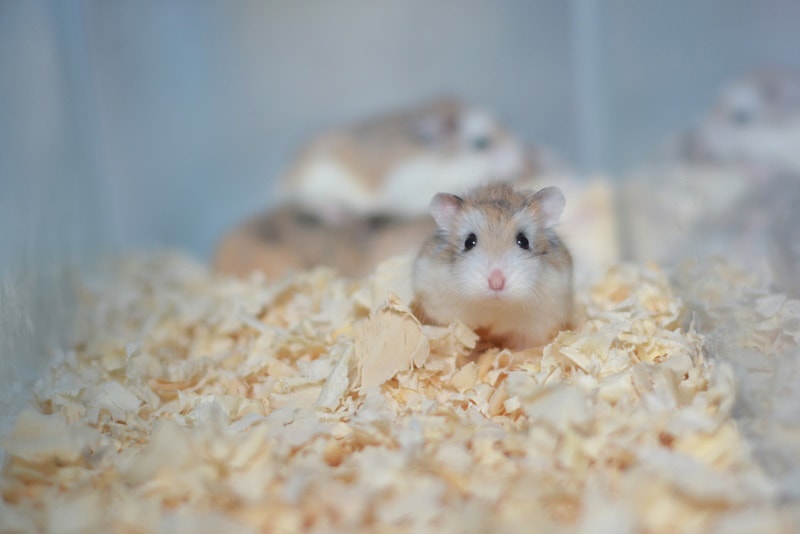
Lifespan and Health Conditions
Hamsters have relatively short lifespans in comparison to some other small pets. They can live full lives with the right care without many health issues. A variety of factors comes into play when you are considering hamster health.
Buying a healthy specimen is very important to ensure your pet’s longevity. Robo hamsters can be susceptible to several ailments. The problem is, because they are prey animals, they often don’t show signs of illness until it is very advanced.
The best way to keep your hamster healthy is to provide them with a proper diet and environment and to seek routine veterinary care for them. This involves one vet visit shortly after adoption and an annual vet visit thereafter (for an otherwise healthy hamster).
Male vs Female
Male robo hamsters are larger than their female counterparts. Anecdotally, males are also more relaxed and easy to handle, while females are more rambunctious and on the go. Both males and females are capable of reproduction at a very early age. The best way to sex your hamsters is to look at their vent for their external reproductive organs.
3 Little-Known Facts About Roborovski Dwarf Hamsters
1. Robo hamsters are from Asia
Robo hamsters are native to certain areas of Kazakhstan, Mongolia, and China.
2. Robo hamsters can dig tunnels up to 6 feet deep
It might surprise you to know that robo hamsters are incredibly efficient diggers. They can dig complex tunnel systems up to 6 feet deep in the wild.
3. Robo hamsters may hibernate
Like other hamsters, robo hamsters may hibernate. However, this is not encouraged for pets, as hamsters do not “fatten up” before hibernation, and if not roused from their slumber, they will perish and pass away. They can be roused out of their hibernation by slowly raising the ambient temperature. Likewise, keeping the ambient temperature high enough will ensure they don’t go into hibernation in the first place. Their ideal temperature is 65–75 oF (18–24 oC).
Final Thoughts
So, what do you think? Does a Roborovski hamster sound like a good fit for you? If you can keep up with routine cage cleaning and provide the environment that this hamster needs, you’re in the clear! They are relatively hands-free, and in most instances, you only have to get one!
Remember that these hamsters are great first-time pets in the right circumstances. Always ensure that child caretakers are knowledgeable about care requirements so that the animal is adequately taken care of.
Featured Image Credit: Pantherius, Shutterstock


